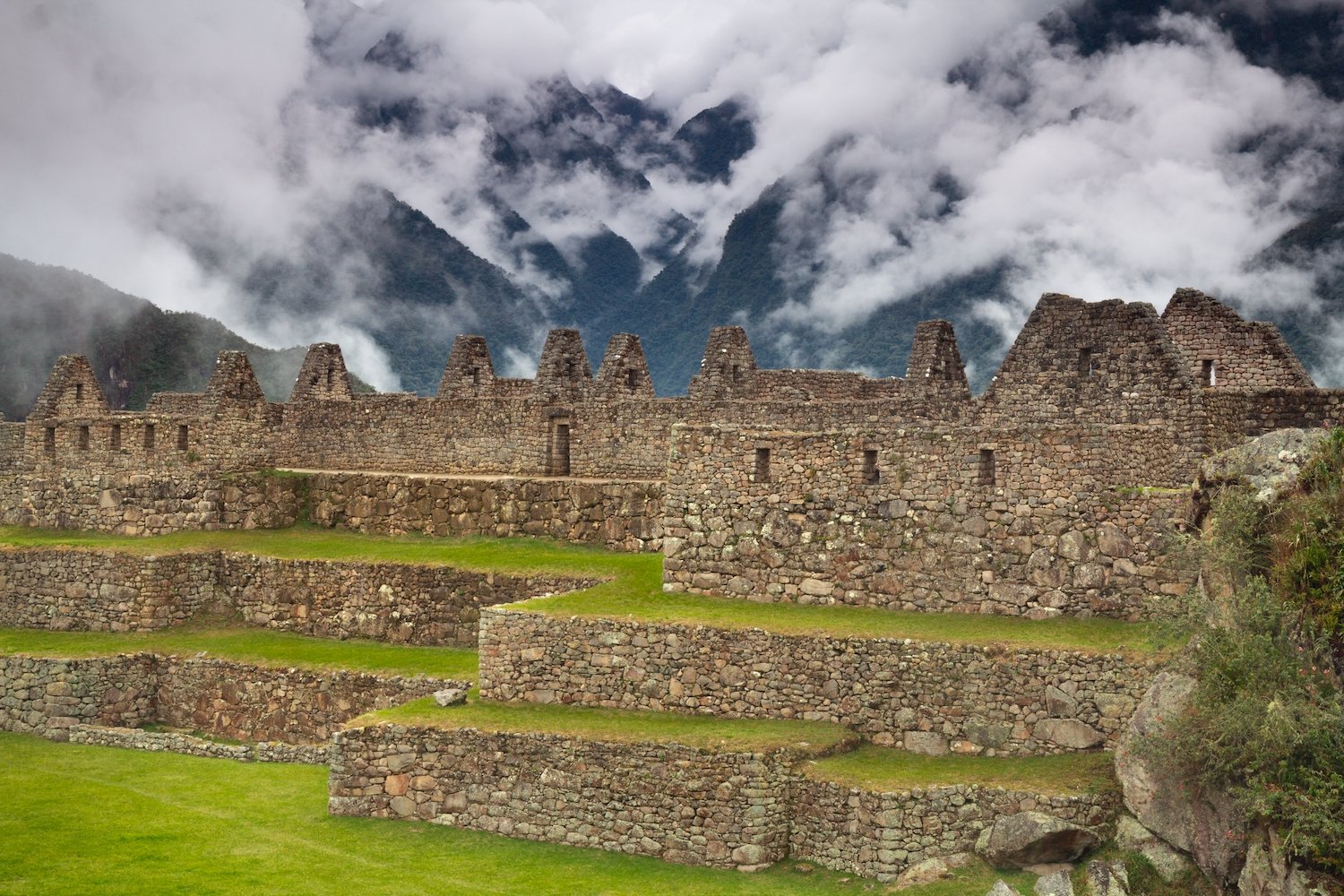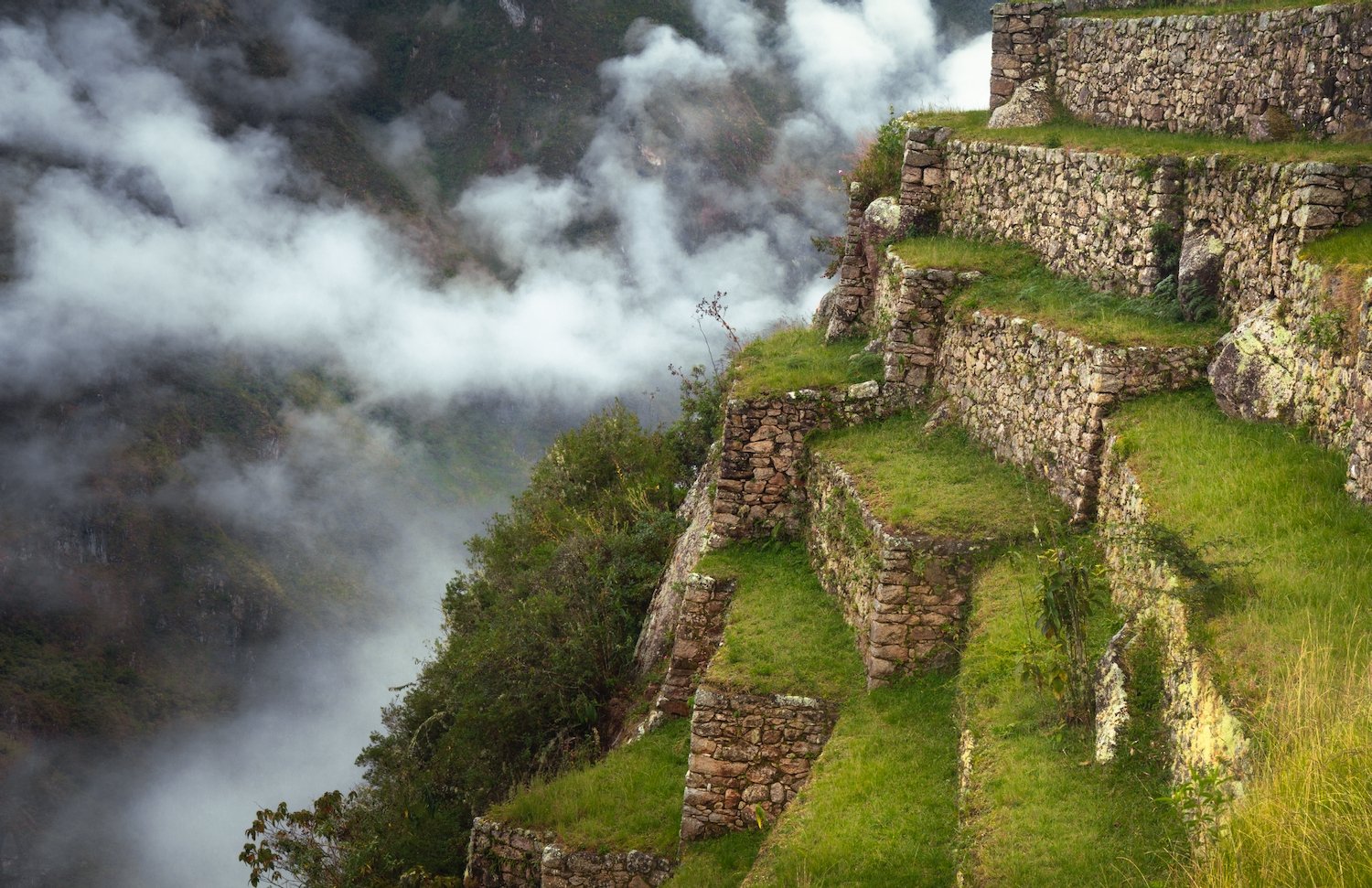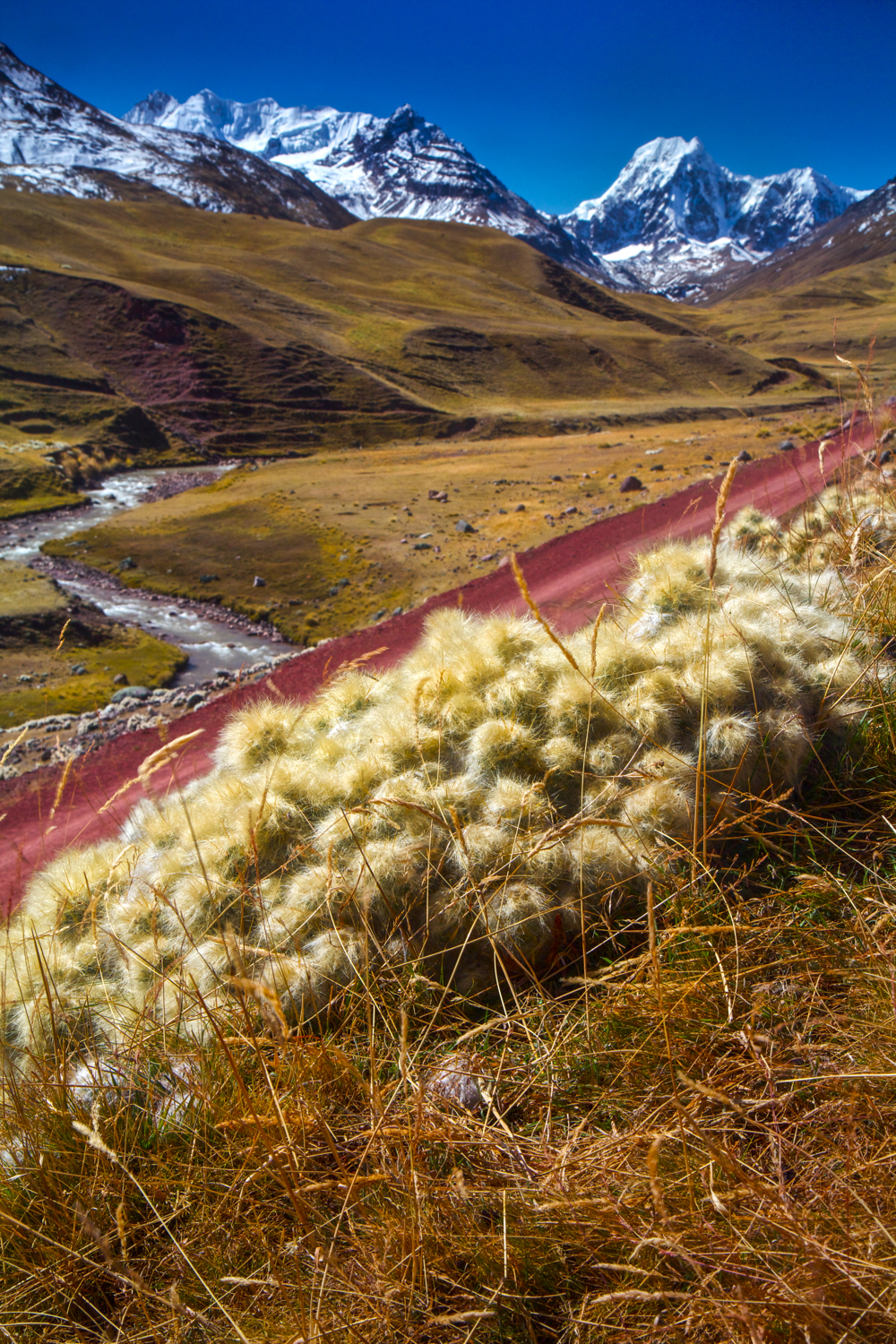Salkantay Trek & Machu Picchu
The Salkantay Trek is a multi-day hike in Peru and a much less crowded and perhaps more scenic alternative to the traditional Inca Trail for reaching Machu Picchu. The view from Soraypampa/Camp One is absolutely jaw-dropping. After the day’s hike, I ventured to a nearby valley to witness the wispy clouds light up during sunset behind one of southern Peru’s most magnificent Andean mountains.
Upon reaching the ruins of Machu Picchu, the early morning mist began to clear, revealing the amazing setting of the ancient city. Alpacas roam the complex and sometimes even seem to pose for passing tourists. Additionally, the rain produces some beautiful waterfalls around the nearby town of Aguas Calientes, which is definitely worth a visit.
Salkantay, Soraypamp Camp
Machu Picchu
Machu Picchu
Machu Picchu
Cerro Blanco
The Cerro Blanco sand dune is located near the town of Nazca on the Peruvian coast. Sandwiched between the ocean and the mountains, it has grown to be the most elevated sand dune in the world. During the Inca Empire, it was considered a sacred place where offerings to the “Apus” (mountains) were routinely performed. Today, Cerro Blanco is perfect for a variety of activities, including sandboarding, dune buggies, paragliding, ATV tours, downhill mountain biking, trekking, and camping on the sand slopes. Reaching the top requires a 2-3 hour hike. Overnight camping at the top offers photographers the chance to capture stunning sunset and sunrise colors, framing the dune and the badlands far below.
Huacachina
Huacachina is a village in southwestern Peru built around a small water oasis and surrounded by tall sand dunes. Often called the "oasis of America," it is a resort for local families from the nearby city of Ica and, increasingly, an attraction for tourists drawn by the appeal of sandboarding on dunes that stretch several hundred feet high.
I didn’t capture any compelling shots of Huacachina, where we stayed for a night, so I focused my attention on the dunes behind the resort town, which extended as far as the eye could see. The sunset gave me little to work with, so I applied a warming filter to my lens to visually accentuate the “heat” of the dunes. If you look closely, you can see the ATV dune buggy tracks on the sand far below.
Laguna Sibinacocha
If there is paradise on Earth, it’s Laguna Sibinacocha. Simply standing on its shores can give you altitude sickness, but the lake’s pristine water, surrounded by two snow-capped mountain ranges, is so breathtaking that it distracts you. Travelers encounter the lake on their way up to the Quelccaya Ice Cap, which requires ascending to an altitude between 4,800 and 5,000 meters (16,000 and 17,000 feet). At this height, few recognizable plants flourish outside of the alien-like spiky cacti. Laguna Sibinacocha is bitterly cold in the winter, and the altitude makes sleeping difficult, but camping on its shores allows you to capture stunning sunrise and sunset shots and use the lake’s colorful, unique rocks as foreground elements.
Laguna Sibinacocha
Laguna Sibinacocha
Quelccaya Ice Cap & Glacier
The Quelccaya Ice Cap is the second largest glaciated area in the tropics and one of the few remaining tropical ice caps. Located in the Cordillera Oriental section of the Peruvian Andes, it sits at an average altitude of 5,470 meters (17,950 feet) and spans an area of 44 square kilometers (17 square miles). Like most of the Earth's glaciers, the Quelccaya Ice Cap has retreated significantly since it was first studied.
When I first learned about it before my trip to Peru, I knew I had to visit, though there was only one company that offered tours there: Ayni Peru. The tour guides were particularly fond of a glacial lake that they kept mentioning. Reaching that lake is exhausting due to the altitude, but the place was absolutely wonderful and incredibly remote. Being there feels like being at the edge of the world.
Manú National Park
East of the Andes, near Cusco in southern Peru, lies Manú National Park in the Amazon Rainforest. This vast natural reserve spans successive tiers of vegetation, from the Andean highlands and cloud forest at 4,200 meters above sea level to the lowland jungle at just 150 meters above sea level. The tropical forest in the lower tiers is home to an unparalleled variety of plant and animal species, including black caimans and spider monkeys. Over 850 species of birds have been identified, and rare species such as the giant otter and giant armadillo also find refuge there.
Manú is renowned for its colorful macaw population, which feeds on clay licks at various sites. To see them, visitors must take an early morning boat ride to arrive just as sunrise illuminates the river. It is particularly thrilling to navigate the rushing waters of the Manú River, passing through dense Amazonian jungle, until reaching the Amazon River, where its exposed bedrock is visible during the dry season.
sacred valley: Sacsayhuamán and Chinchero
Besides Peru’s natural beauty, its ancient architecture tells a story of human ingenuity that’s just as compelling. Sites like Sacsayhuamán and Chinchero reveal how the Inca shaped their world with both precision and vision. Towering above Cusco, the fortress of Sacsayhuamán stuns with its massive stone blocks—some weighing over 100 tons—meticulously carved and placed so tightly together that no mortar was needed. The scale and symmetry of its zigzagging walls are a testament to a civilization that mastered both engineering and aesthetics.
Further into the Sacred Valley, Chinchero offers a quieter, yet equally evocative glimpse into the past. Its graceful terraces step down a high plateau, with sweeping views of Hatun Luychu mountain standing sentinel in the distance. Blending living Quechua traditions with Incan heritage, Chinchero is a place where history and landscape feel inseparable.
Sacsayhuamán
Chinchero and Hatun Luychu





















